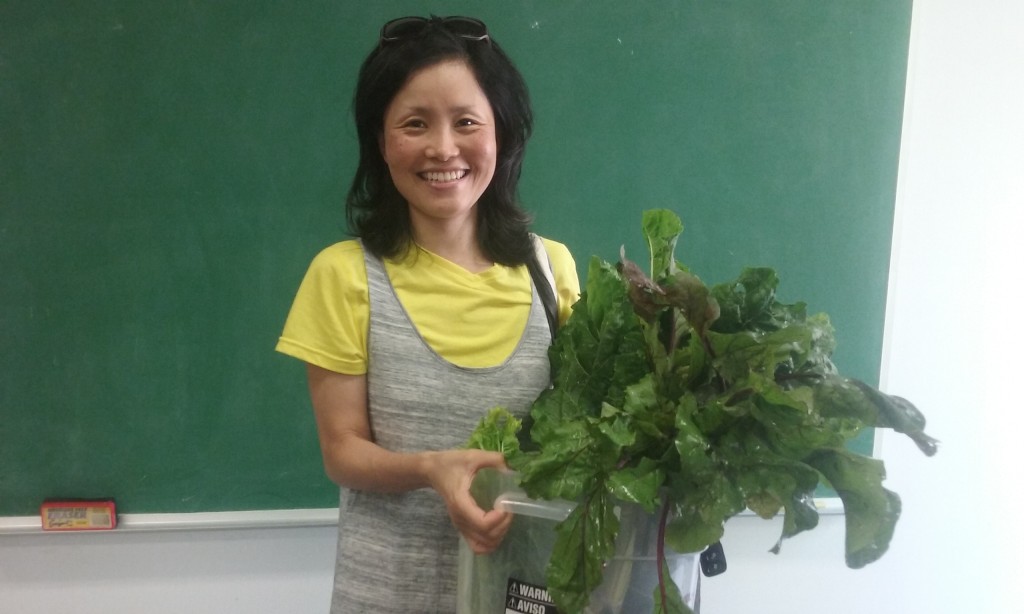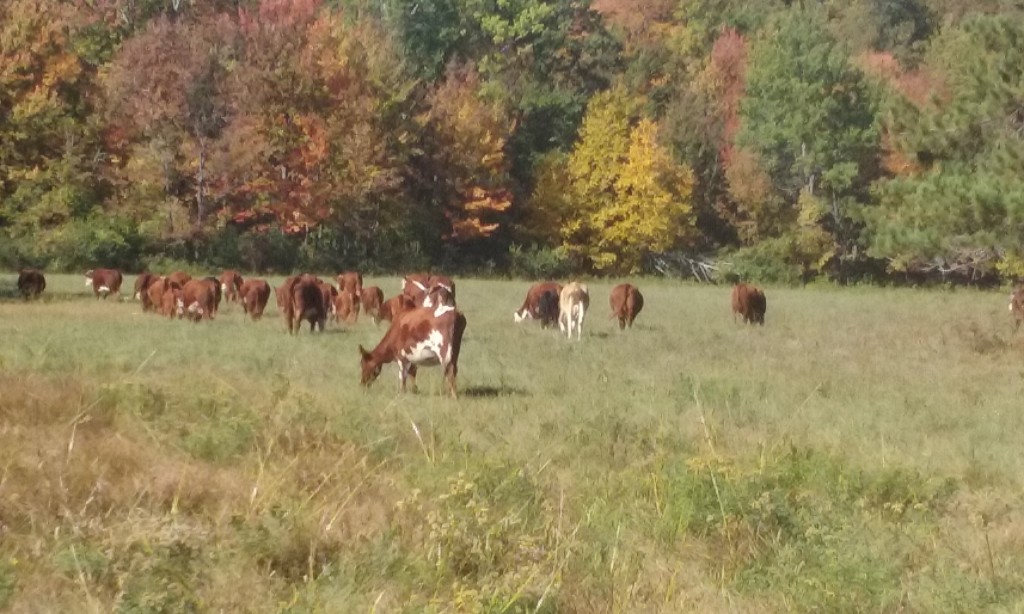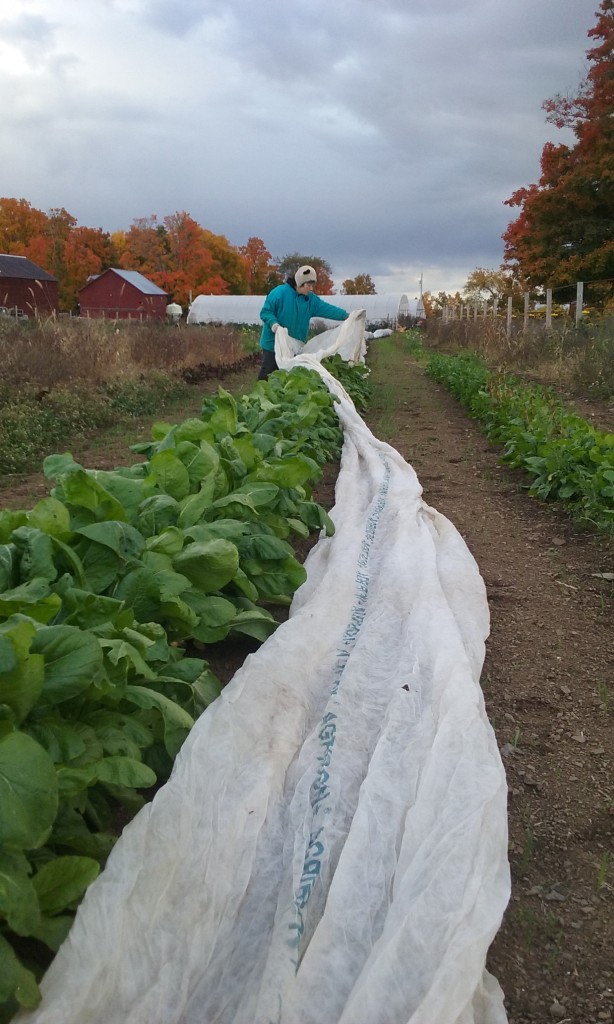Week of October 6, 2019

Permaculture and Regeneration
I’ve written before about regenerative farming. Permaculture is the design for which regenerative agriculture can be realized. Permaculture aims to create a system whereby human systems can fit into natural systems in such a way that the health of both is increased. It is a partnership with ecosystems to promote vigor and ecological regeneration. It aims to promote resilience and sustainability of the land on which it is practiced. It is what we strive for here on EMCF: healthy soil = healthy plants, healthy animals = healthy people, healthy environment, healthy communities.
Over one hundred years ago, during another time of crisis, Thomas Hardy wrote:
Only a man harrowing clods
In a slow silent walk
With an old horse that stumbles and nods
Half asleep as they stalk.
Only thin smoke without flame
From the heaps of couch-grass;
Yet this will go onward the same
Though Dynasties pass.
As Wendell Berry writes in The Unsettling of America Culture and Agriculture:
Today most of our people are so conditioned that they do not wish to harrow clods either with a horse or a new tractor. Yet Hardy’s vision has come to be more urgently true than ever. The great difference these sixty (now 100) years have made is that, though we feel that this work must go onward, we are not certain that it will. But the care of the earth is our most ancient and most worthy and, after all, our most pleasing responsibility. To cherish what remains of it, and to foster its renewal, is our only legitimate hope.
In a time when massive industrial corporate monoculture farms are replacing divesified family farms and hamburger grown in laboratory petri dishes can now be found in some restaurants, your support of local and organic farms and businesses is more important than ever!
Produce from the Farm this Week
Napa Cabbage, Tomatillos, Hot Cherry Peppers, Cilantro, Roma Tomatoes, Dandelion Greens, Lettuce, Zucchini
Salsa Verde
1 pint Tomatillos, husks peeled, rinsed
1 bunch cilantro
1 hot pepper
1 bunch Scallion tops
1 or 2 cloves garlic, peeled
Chop all ingredients fine or put through a food processor. Cover and refrigerate several hours or overnight. Serve with chips, eggs, chicken or pork
Thanks to Michelle Shin for this awesome kimchee recipe!
Korean Kimchee
This is a great way to preserve your Napa Cabbage and also provide a healthy, fermented, nutrient dense food to your daily diet. Kimchee stores in the refrigerator for several months. Add a spoonful to your plate each night with dinner to get those probiotics in. Kimchee can also be made using just about any type of green: dandelion greens or kale for example. With dandelion, Michelle recommends adding a bit of honey.
1/2 head napa cabbage
5 Tbsps minced garlic
1/2 tsp ginger, minced
2 Tbsp fish sauce
2 Tbsp Korean red pepper
1 Tbsp sea salt
1 Tbsp sugar
Chop vegetable 4 to 5 inches long. Sprinkle with sea salt (brine) over vegetable in layers. Pour water over vegetable and stir to make sure it is evenly salted. Should taste like sea water, so adjust salt as needed. It is better to over season than under season. Cover and place something heavy over cover so vegetable is all in contact with brine. Let brine for at least 1 hour. Meanwhile mix garlic, ginger, fish sauce, red pepper, sea salt, and sugar to form a paste. After the hour or so of brining, drain vegetable and add kimchee paste. Mix well and put into jars. Press kimchee down in jars leaving about an inch of space on top between vegetable and top of jars for air to allow for proper fermentation. Put top on jar and leave at room temperature until fermented to your taste, about 3 days at 70 degrees. Once fermentation is complete, store finished kimchee in refrigerator.
Napa Saute’
1/2 head napa cabbage, chopped
Sesame oil
1 inch piece of fresh ginger, peeled and minced fine
Sea salt
Heat sesame oil in saucepan over medium heat. Add ginger and cook 1 to 2 minutes until fragrant. Add napa. Cook and stir to coat with oil then turn heat down to low. Cover and cook until tender, about 20 minutes, stirring frequently.
Next week…..Swiss chard, Arugula, Radicchio
Row covers went on less cold hardy vegetables Thursday to help protect them from the frost
 Eight Mile Creek Farm
Eight Mile Creek Farm




Yes, When you buy food directly from an organic farmer like yourself, you are supporting someone who’s main focus is to grow the healthiest food possible. When you buy food from a supermarket, even food which is claimed to be healthy, you are not getting anywhere near the same quality and you are supporting a system that uses deceptive advertising etc. It’s a shame that most people do not know or care what is going on with their food and how important it is to support small organic farmers like you.
Here here, Robert! Your words are so true. I think Pam’s food – her produce and meat- are THE best quality I have ever purchased. Period. Everything is grown with such care, such keen awareness of all that has gone “wrong” with the food industry, such fierce determination to do what’s RIGHT for her customers, her animals, the soil…without pesticides and manufactured fertilizer (not even “just a little”). She also puts her customers before herself- I know this for a fact, as I have witnessed it. I am sure there are people out there who are as dedicated as she is, but I haven’t met them yet. I sure hope our Peekskill Farmers Market can lift her up and keep her going (ie weekly shopping and/or purchasing CSAs) because I believe she and those like her are our and our children’s last best chance for healthy, cancer-free lives.